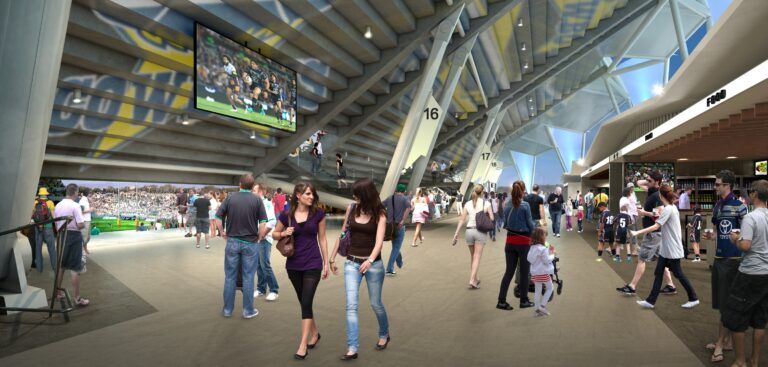From immersive environments to greater F&B offerings, Cox Architecture’s Alastair Richardson explains how stadia can improve fan experience
The immersive stadium environment is something that fans want and value. Some venues have offerings such as wi-fi and DAS (distributed antenna systems), but we see that as more of a complementary experience, as opposed to an interactive, immersive experience. Some of our clients certainly have this realization that wi-fi and cell phone connectivity is a personal experience. What we’re trying to create is a mass experience that is unique to a particular venue, sport or entertainment.
It’s no longer just about the sport – it’s more about what’s happening on the boards, with the lighting, with the sound. It’s an immersive experience that turns going to a live sports game or an event into something truly unique. I believe that we will see a growing realization of this.
If we think about when we go to the theater and see how set designers work, or go to the movies and see the creation of an immersive environment that’s all-encompassing – we’ll begin to see that in a stadium. The bigger the board the better. It’s the reason people go to an IMAX screen over a regular movie theater – because the screen is large and immersive. This notion of using a very large screen as part of the experience is about directly engaging with the fans on a scale that you can’t normally achieve with a TV or cinema.
However, one thing that is very evident in the UK is the crowd experience is still fully focused around what’s going on inside the seating bowl. When a fan is sitting in their seat, it’s great for viewing the action, but there’s not a lot of interactivity in terms of using the boards as part of the experience – they’re mostly used for advertising.
The concourse environment in the UK is relatively lacking too, in terms of food and beverage offerings, especially for someone paying for a top-price ticket. Compare that with the new Optus Stadium in Perth, Western Australia – fans there get an experience that is engaged, in a social environment where we want people to gather and eat and drink (safely), with a large F&B offering. That’s why food and beverage sales are through the roof in Australia compared with the UK. I think it’s about time that, in Europe, the fan experience, the creation of the fan experience in the concourse, and how that adds to the whole event-day experience – not just sitting in a seat for 90 minutes – is something that needs to be critically addressed.
The competition for the entertainment dollar, particularly in markets that are essentially still recovering from the global financial crisis, is intense. There’s money there, and fans want to spend it, but they want a great experience. They don’t want to be treated like cattle. They want to eat well at the venue, and they are prepared to pay, but they don’t want to be ripped off.
Alastair Richardson is a director at Cox Architecture. He joined the company in 2010 and was appointed director of Cox Sport in 2011. Alastair is one of Australia’s most experienced sport architects, with more than 20 years of experience in the design and delivery of complex sport facilities including the award-winning Adelaide Oval, SCG (Sydney Cricket Ground) Northern Stand, and Suncorp Stadium, Brisbane, in Australia; and Westpac Stadium in Wellington, New Zealand.
June 27, 2018





